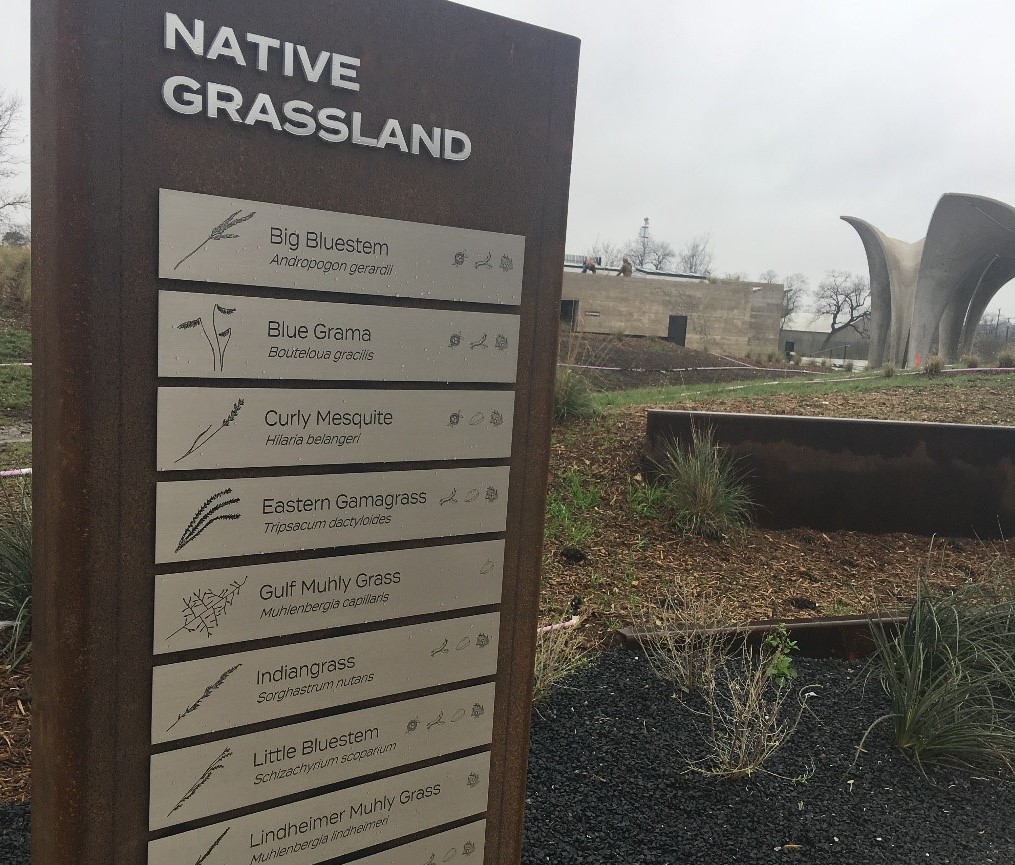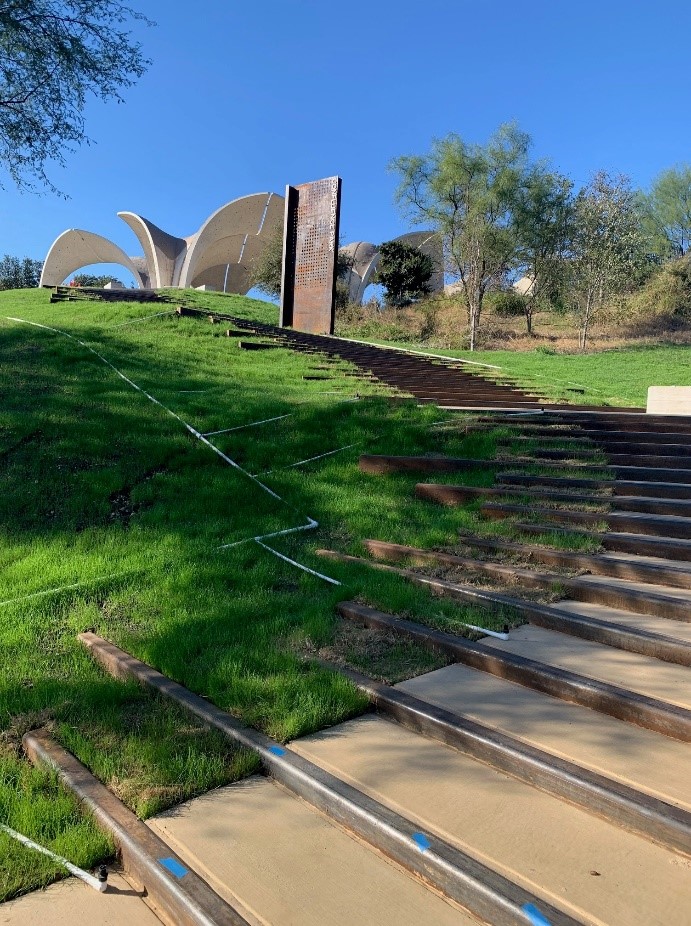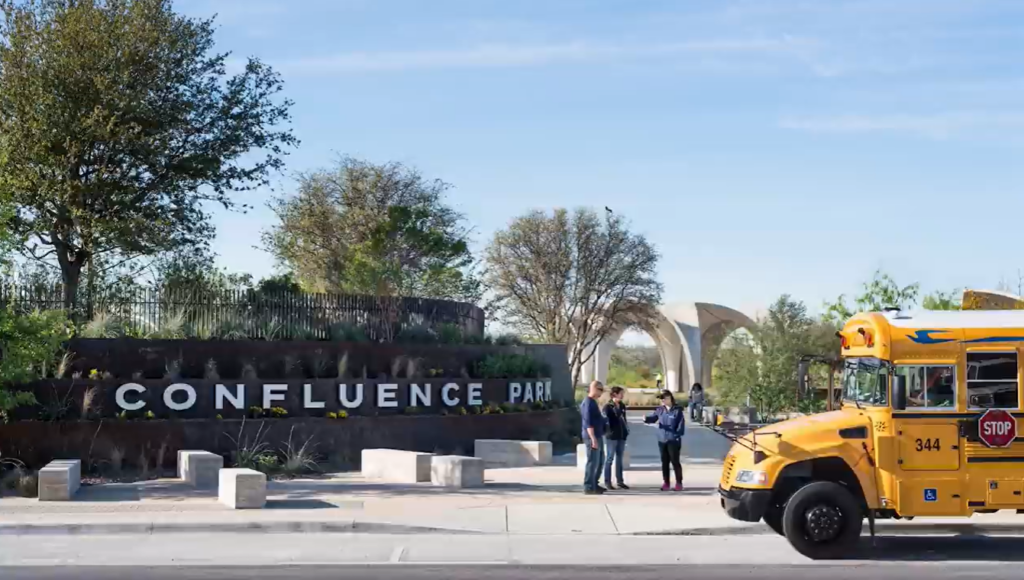Last Updated on March 31, 2023
Like an ethereal and grand flowering lily, Confluence Park emerges near the banks of the San Antonio River. Located on the south side of San Antonio along the Mission Reach of the San Antonio River Walk, Confluence Park is built not to just be uniquely beautiful, but also built to work with the environment in innovative ways. A product of a partnership between the San Antonio River Authority (River Authority) and the San Antonio River Foundation, this park is as much of an architectural triumph as it is an environmental stewardship success.
The River Authority’s Education and Engagement team is responsible for educating visitors at the park (when conditions allow) and the team has shared the following info that serves as a guide for education and enjoyment upon a visit. Read along and plan your own excursion!
Dynamic Environmental Features
With environmental education as its core purpose, Confluence Park is envisioned as an interactive teaching tool that will inspire a greater understanding of Texas ecotypes and watershed dynamics. The park’s design is highly effective at capturing all the rain that falls upon the property. By capturing this rainfall, the park prevents runoff water from picking up and carrying pollutants across the land’s hard surfaces, to the storm drains and then untreated, out to the San Antonio River.
For most visitors, the most astonishing feature is the BHP Pavilion and the structure reminds them of a flower. Each of the “petals” of the pavilions are constructed of 40,000 pounds of concrete that can collect an astounding total of 286,000 gallons of estimated rain annually. The water does not go to waste, as it’s stored for reuse in the park’s bathrooms toilets.
How is the collection of so much rainwater accomplished? Up to 100,000 gallons can be stored in an underground chamber that is structured with polymer containers that lock together to provide structure and support to the chamber and the soil and plants above it. Another 100,000 gallons can be captured in a bio-filtration embayment, which is above the underground chamber, also known as the catchment system tank. The bio-filtration embayment helps to remove pollutants from the rainwater runoff by allowing the water to infiltrate and percolate into the ground, getting “polished” by natural means.

Another nature-based way Confluence Park’s design guides water into the ground is by planting and featuring the vital grasses that are native to the regional area. Serving as both functional and educational, you will find numerous grass species, artfully labeled in their beds, with signs that inform you of just how important native grasses are to river ecosystems. Native grasses are even planted on top of the Estela Avery Education Center helping to keep the interior of the building cool and reduce the heat that can radiate from a traditional rooftop!
River Connections

Of course, a visit to Confluence Park would not be complete without traveling down the grand staircase towards the San Antonio River. Right away, the sound of water rushing over rocks will greet you, as you leave the park and enter the River Walk. Tighten those laces and continue your journey while you take in the scenic views and native landscape of the Mission Reach ecosystem restoration project! Look across the wildflower meadow and tall native grasslands and you might see a majestic osprey diving toward the water for fish or a painted bunting sitting proud on a recently planted tree.
This blog merely scratched the surface of the unique qualities and artwork of Confluence Park. Indeed, there are creative artworks, an oak conservatory, a parking lot with pervious cover, and ecotype demonstration gardens to learn from and explore. As breathtaking as it can be to visit, the importance and value the park’s design brings to the San Antonio Basin is priceless.




